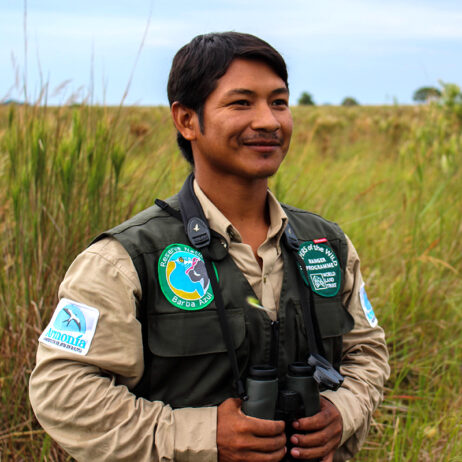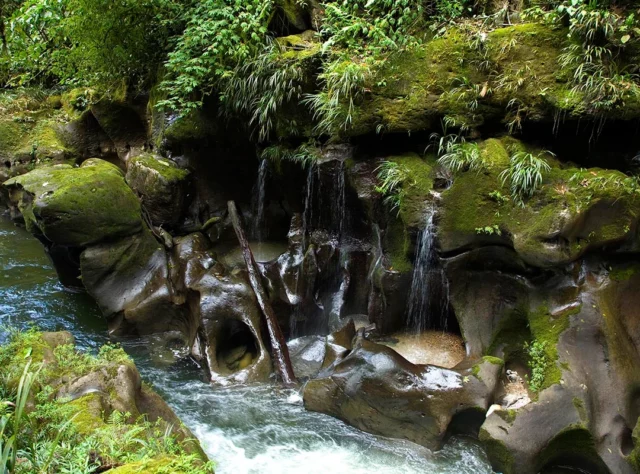
A limestone canyon in the Río Anzu reserve. Credit: EcoMinga
In the haze of the early morning, a rare orchid hides from the sunlight in a forest in the sky.
Dangling its upside-down flowers over the edge of the rock on which it grew, a flower unknown to science waits to be discovered.
Two trees that have stood unseen for untold years, hidden from human knowledge, are found in the space of a single field trip.
What do these three stories have in common? The answer: they all happened in the same location! That’s right, three miracles of scientific discovery took place in the Río Zúñac and Río Anzu reserves in Ecuador’s upper Río Pastaza watershed!
Often, when thinking of conservation, most people will naturally think about animals: the endangered fauna species that walk, swim and fly through the world’s diverse ecosystems. In so many places, however, there is plenty of fascination to be found in the world of flora.
We’ve already introduced you to some of the wildlife you can save with our new Life on the Edge appeal. Now, allow us to take you on a magical mystery tour of the myriad plant-based wonders of Ecuador’s cloud forests, and the two incredible reserves within them, managed and protected by WLT partner organisation Fundación EcoMinga.

The Río Zúñac reserve; home to at least 20 endemic plant species. Credit: Bethan John.
A newly discovered orchid
To start things off, we have a species of orchid that is new to science – and not just a new species, but a whole new genus! Quechua glabrescens is distinguished from most orchids by its non-resupinate (upside-down) flowers and its status as a lithophyte (a plant that grows on rocks). Discovered in a limestone canyon in the Río Anzu Reserve, the species is in fact so distinctive that a whole new genus – Quechua – had to be created in order to find it a home.
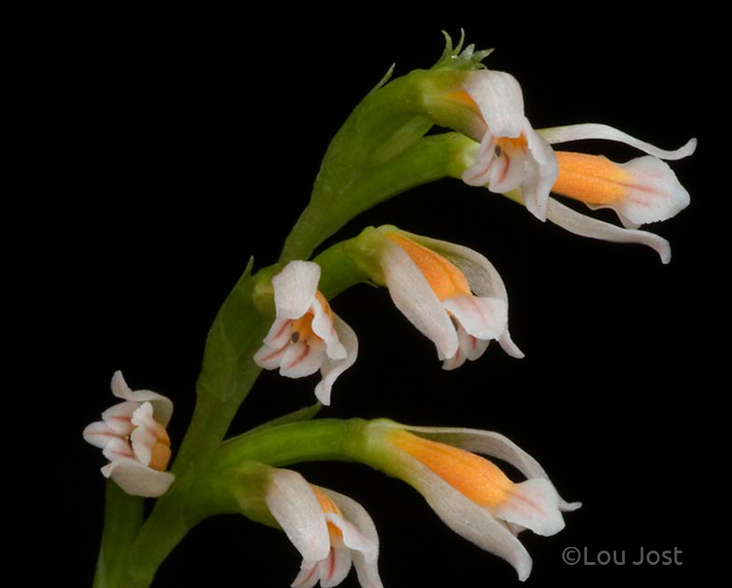
The curious Quechua glabrescens. Credit: Lou Jost
The Quechua glabrescens is an exceedingly rare plant. Since the 1970s, it has only been found in the Río Anzu reserve and on two other occasions in Peru. With the unprotected land surrounding Río Anzu under threat from the oil, timber and agriculture industries, expanding the reserve is of crucial importance to the survival of this new species.
Two new magnolias
Continuing on the theme of newly discovered species, the Río Zúñac reserve is home to not one, but two brand new species of magnolia trees! It’s amazing to think that new species of such a widely known tree can continue to be discovered, and the two species found in Fundación EcoMinga’s reserve certainly give cause for excitement. Indeed, some of the examples of the newly discovered trees were among the largest trees in the forest in which they were discovered, and were “completely unknown” to the local people!
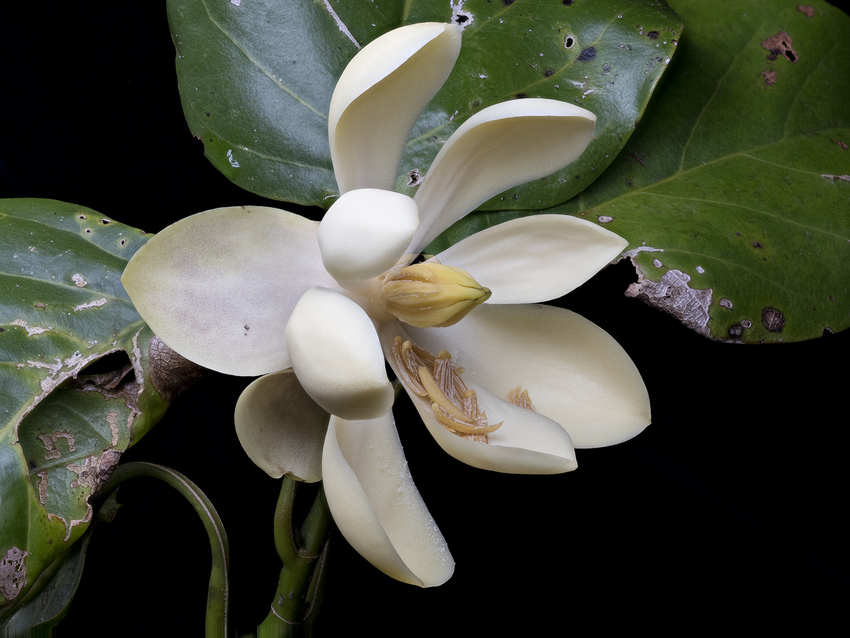
Magnolia vargasiana, one of the newly discovered species of magnolia found in the Río Zúñac reserve. Credit: Lou Jost
A curious orchid
In the Río Zúñac and Río Anzu reserves, there are a great many species of orchid. One such species is the Neooreophilus chaoae. This small, beautiful plant is one of the countless species of flora that can be found hiding in the two reserves, but there is something special about it. Something curious. A nearly universal truth about all orchids – indeed, about all plants – is that they grow towards the light. Well, that fact is no longer as universal as we thought, as the Neooreophilus chaoae actually grows facing downwards! The flowers point towards the ground, resulting in a plant upon which the newest leaves are lower than the older leaves. What makes this even more fascinating is that nobody can work out why this happens!
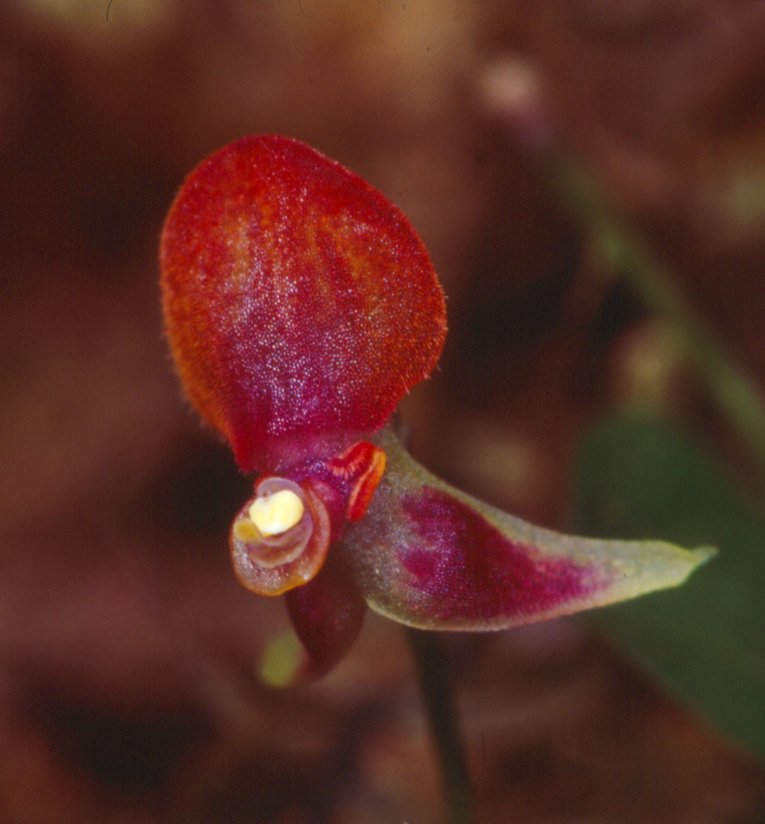
Neoreophilus chaoae: a mysterious orchid. Credit: Lou Jost.
A ‘most spectacular tree’
Of all the magnificent species discovered in the two reserves, there is perhaps one more beautiful than the rest. The Meriania aurata is a simply stunning species of tree in the melastome family, discovered in the Río Zúñac reserve. Lou Jost, President of Fundación EcoMinga, has described it as “the most spectacular tree I have ever seen”.
The tree is characterised by its vibrant inflorescences. The bright yellow stems give the appearance of shiny plastic, while their orange rosebuds open into short-lived, salmon-coloured flowers, each with a row of anthers described by expert botanist Jost as “bizarre”.
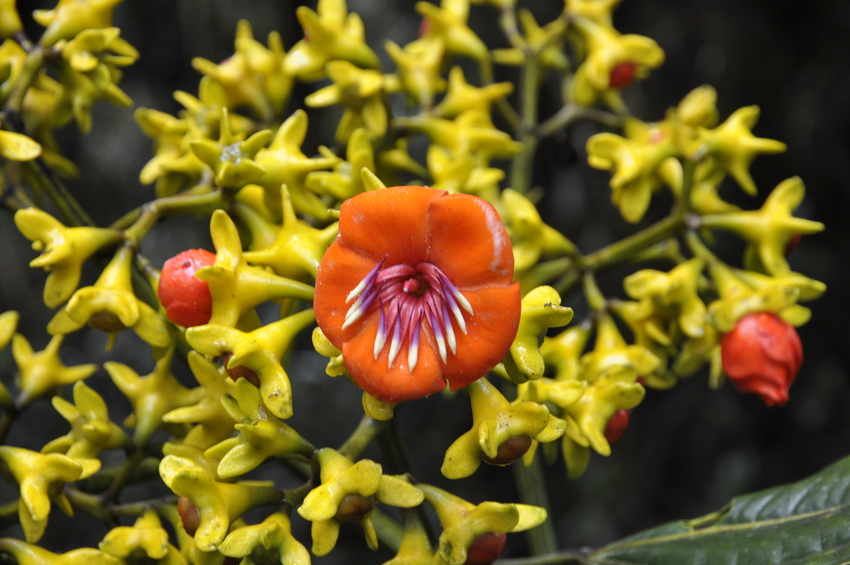
The spectacular, bizarre, Meriania aurata. Credit: Lou Jost/EcoMinga
Lou wrote that he had first come across the fallen buds of this tree years before actually discovering it! This just goes to show that, in an area of such incredible biodiversity, you never truly know which undiscovered wonders could be hiding around the corner.
Five freshly found trees
We started this article off with a species of orchid new to science, and we’re ending with not one, but five trees discovered in a single field trip! In the Río Zúñac reserve, researchers discovered an astonishing five tree species hitherto unknown to science, in the genus Sciodaphyllum. Subsequent research has found that at least four of the five species may be entirely restricted to the Río Zúñac reserve, truly cementing it as a safe haven for these wonderful new trees. One of the species of trees that has been discovered has been named Sciodaphyllum recaldiorum, after the Recalde family. The Recalde family are Keepers of the Wild who were the first rangers hired to protect Fundación EcoMinga’s reserves.
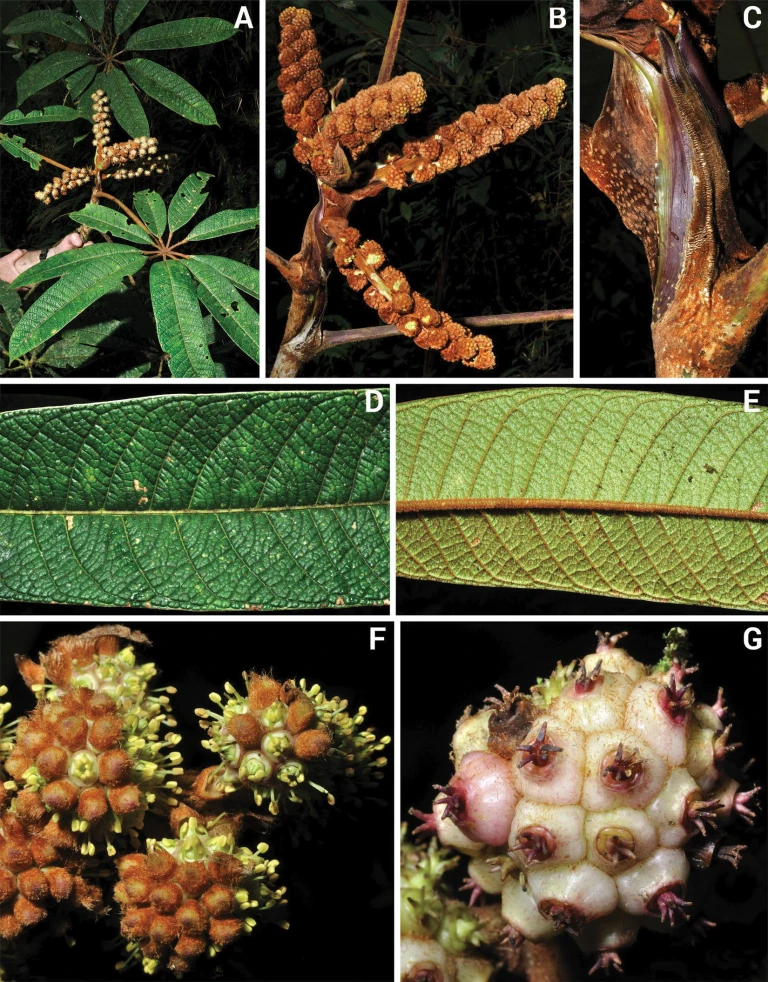
Sciodaphyllum recaldiorum, named after the Recalde family. Credit: Pete Lowry
With your help, we can bring protection to so many species forced to live life on the edge. We can secure the Río Anzu and Río Zúñac reserves to ensure that the plantations, cattle pastures and oil projects that threaten them will not be able to encroach any further.
The upper Río Pastaza watershed is an area of unprecedented beauty, environmental importance, and astounding biodiversity. It is as rich in potential as it is in wildlife; if protected, it can thrive as a hotbed of conservation – a beacon of hope in the face of the threats facing the natural world.


